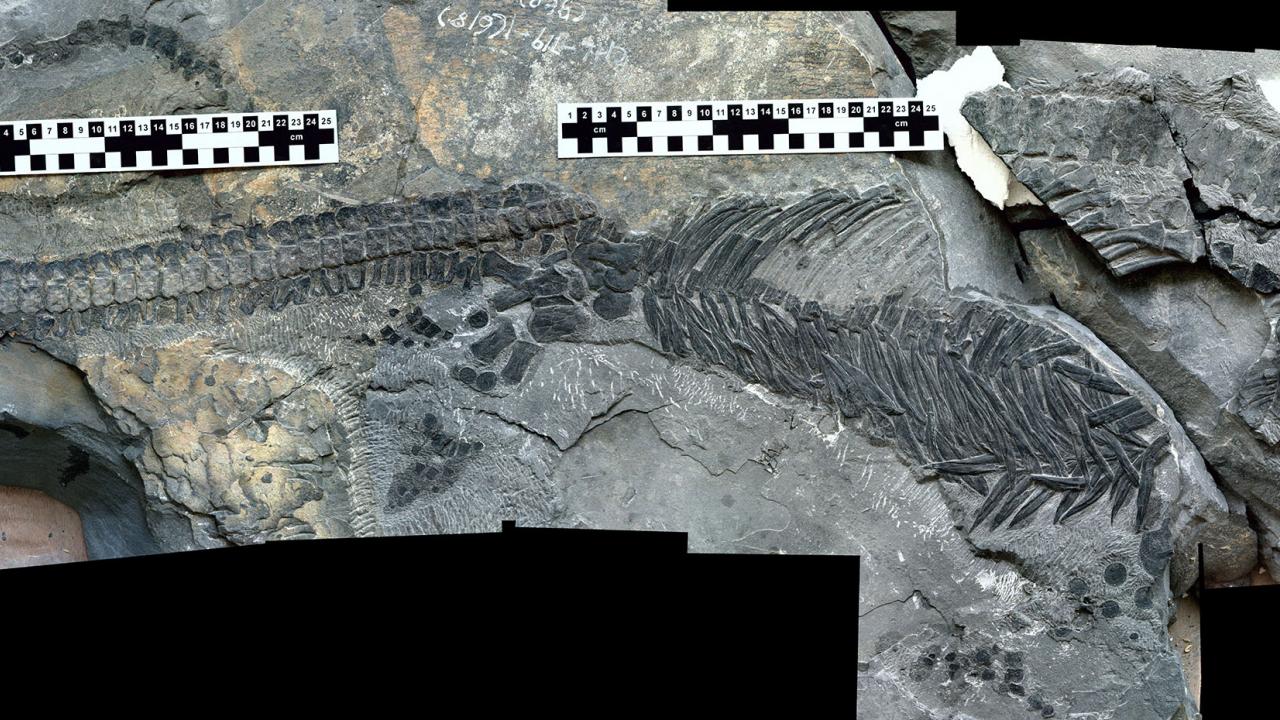Quick Summary
- Newly discovered animal swam in the oceans 250 million years ago
- Belongs to same group as dolphin-like reptiles called ichthyosaurs
- After mass extinction, new and diverse animals appeared
A newly discovered fossil is changing ideas about the evolution of the dolphin-like ichthyosaurs, marine reptiles that lived at the same time as the dinosaurs on land, and shows how quickly life rebounded from a catastrophic mass extinction 250 million years ago.
The fossil, named Sclerocormus parviceps, was discovered in a quarry in Anhui province, China, and is described by a team including Ryosuke Motani, professor of earth and planetary sciences at UC Davis, in a paper published in Nature Scientific Reports May 23.
According to the fossil record, almost all life in the oceans was wiped out in a mass extinction at the end of the Permian period 250 million years ago. After the catastrophe, reptiles re-colonized the oceans, and eventually ichthyosaurs, air-breathing reptiles with fishlike bodies and large eyes became an important species. However, the origins of ichthyosaurs have been murky.
Analysis of the Sclerocormus fossil and comparison to other fossils enabled the researchers to place it among the ancestral ichthyosaurs but separate from any previously known group. The animal, which was about 5 feet long, had a short skull, a short, stocky body with four fins and a long, whiplike tail taking up more than half its body length. The shape of the skull and snout suggest that Sclerocormus fed by sucking in prey, much like many modern fish.
Because Sclerocormus appears just a few million years (very soon, in geological terms) after the end of the Permian period, and is clearly so different from other fossils of the time, it shows there must have been far more diversity among marine reptiles at the beginning of the Triassic period than had been thought, Motani said. This would, however, be in line with evidence from fossils of land animals and plants, which show rapid diversification following the mass extinction.
Motani is co-first author of the paper with Da-Yong Jiang, Department of Geology and Geological Museum, Peking University. Other authors are Wan-Lu Fu, Peking University; Jian-Dong Huang, Yuan-Chao Hu and Rong Zhang, Anhui Geological Museum; Andrea Tintori, Università degli Studi di Milano, Italy; Olivier Rieppel, The Field Museum, Chicago; Nicholas Fraser, National Museums Scotland; Cheng Ji, Nanjing Institute of Geology and Palaeontology, Chinese Academy of Sciences; and Neil Kelley, Smithsonian Institution. The work was supported by the National Geographic Society and the National Natural Science Foundation of China.
Media Resources
Ryosuke Motani, Earth and Planetary Sciences, 530-754-6284, rmotani@ucdavis.edu
Andy Fell, News and Media Relations, 530-752-4533, ahfell@ucdavis.edu
